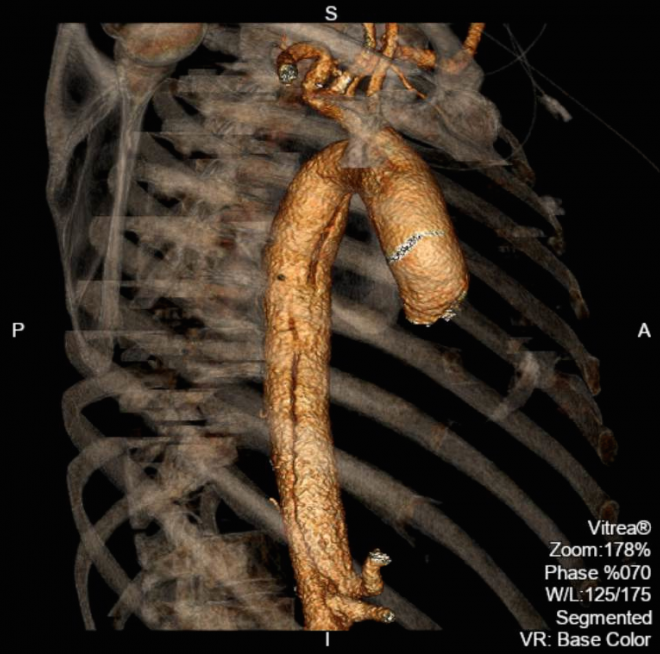When it comes to back pain, think of the worst, i.e. the most dangerous ones, first. That way you won’t miss anything critical, either in real life or on the Boards.
Cardiovascular
- Upper back pain: consider acute coronary syndrome or thoracic aortic dissection
- Lower back pain: consider abdominal aortic aneurism or rupture (older smoker) and retroperitoneal hematoma. Look for distended abdomen, pulsatile abdominal mass or bruit, diminished femoral pulses or sudden unexplained anemia or volume loss

Infectious
Consider most especially in the following situations:
- Systemic signs (e.g., fever)
- HIV, intravenous drug abuse or other immunocompromised states
- History of recent back injections or surgeries
Other infectious cases of back pain include:
- Pyelonephritis
- Discitis/osteomyelitis
- Herpes zoster (shingles)
Malignant
Consider most especially in the following situations:
- Personal history of cancer
- Unexplained fatigue, weight loss, anorexia, lymphadenopathy, nocturnal bony pain, pain not relieved with rest or immobility, night sweats
- Unexplained hypercalcemia or microcytic anemia, and renal failure (multiple myeloma)
- New urinary retention or incontinence, saddle anesthesia, progressive weakness.
Traumatic
- Major trauma, or even minor trauma in a frail, osteoporotic, or glucocorticoid-using patient
- Look for tenderness over spinous processes.
Immune-mediated
- Seronegative spondyloarthropathies
- Acute hemolytic transfusion reaction
- Retroperitoneal fibrosis
Lumbar spinal stenosis
- Lower back pain that is worse with walking on level ground or standing, and better with walking uphill or stooping over a supportive object such as a shopping cart or walker.
Mechanical
- The most common cause of back pain
- Typical presentation is of sudden onset of lower back pain, associated with mechanical stress and improved with rest, in an otherwise sedentary and often overweight or obese patient
- “Nearly all regional backache is of indeterminate causation…. Mechanical low back pain and sciatica due to disc herniation is a transient, self-limiting condition. Patients should be told this…. The reassurance you thus provide is priceless…. Three minutes
talking with the patient can be more helpful than anything else you have to offer. NEVER mention to the patient the words ‘disc,’ ‘spasm,’ or ‘sciatica.’”(Cohen, pp. 45 & 55). - Pediatric back pain should be viewed with particular suspicion for badness. (More here.) The younger the child the more likely it is that the cause is not benign.
Constipation
Pregnancy
References
- Sabatine, Marc S., MD, MPH, Editor, Pocket Medicine (2010)
- Am Fam Physician. 2012 Feb 15;85(4):343-50. Diagnosis and treatment of acute low back pain. Casazza BA.
- The Merck Manual for Health Care Professionals: Seronegative Spondyloarthropathies.
- A Short Orthopedics Text for Emergency Physicians by Merrill A. Cohen MD (2001)
- Minor Emergencies by Philip Buttaravoli MD (2012)


Leave a Reply